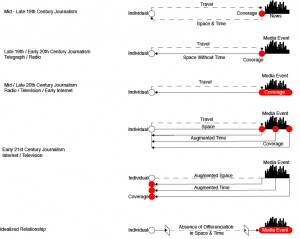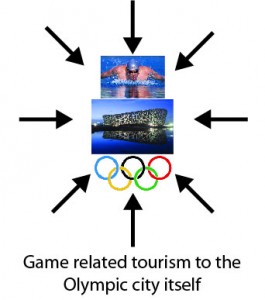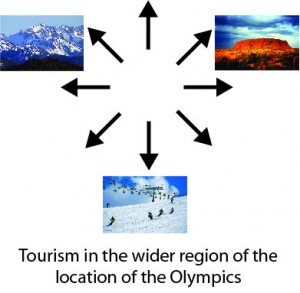RESEARCH
Kingdome Implosion
Rogue Farm Short
Rogue Farm Short
Rogue Farm from Mark Bender on Vimeo.
A truly ‘glocolised’ world.
Sequel to the award winning GOLDEN AGE – THE SIMULATION, ‘SOMEWHERE’ attempts to visualise the notion of a ‘downloaded architecture’. We are in a time where much of what we do is online. The notion of the online will radically change, the notion of the computer and the home will merge. We will download parks and places to relax, have skype phone calls with simulated telepresence of our friends and family, be immersed in nanorobotic replications of any kind of objects or furnishings downloaded on credit based systems. The local becomes the global and the global becomes the local. Consumer based capitalism would change forever.
A truly ‘glocolised’ world.
Media in Space and Time
In the mid to late 1800’s, traveling journalist became necessary for newspapers to satisfy the desire of communities for information during the Civil War. In order to obtain information, the journalists would have to travel to the news source, obtain the information, and then travel back.
By the late 19th century, the journalist no longer had to travel back to send the information; the telegraph allowed the information to be sent over large distances instantly. The seperation of the individual and the news was no longer seperated with time (space without time) and the Media Event was born.
In the mid and late 20th Century, the radio, television and early internet helped bring about a contious coverage of events (both news and media events). Instead of these events being viewed as singular points in time, they began to have depth in time.
By the early 21st century the way that media covered the event became variable. Coverage of the media event could be split into peices and intermixed, thus augmenting the sense of time of the Media Coverage. Another method has been to displace the coverage of the event closer to the individual; accomplished by outsourcing filming of the event to sources more local to the Media Event. This distorts the sense of both space and time.
Many of these models attempt to allow the individual to feel like they are a part of the Media Event, suggesting the absence of differenciation in space & time between the individual and the media event.
Game related tourism for the Olympic city itself.
More common for the Summer Olympic games.
– Summer Olypics Cities
– larger cities
– large population
– major commercial funding
– much more popular and greater media coverage.
Recent Olympic City Examples:
Athens- 2004
– tried to follow the Barcelona plan but lacked the urban development strategy of it.
– decided to focus more on business and tourism after the Olympics rather than before.
– scatteredness of the venues rather than more centrally located.
– was still a overall success.
Beijing- 2008
– goal was to promote the traditional Chinese culture, showcase the history and development of the city as well as the friendliness and hospitality of its citizens.
– did not have that great of a media leveraging strategy.
– China’s society was at odd with the western world due to its record on human rights.
– even with it’s issues with the media, Beijing was a largely successful game.
Tourism in the wider region of the location of the Olympics
Easier and more common for Winter Olympics games.
– Winter Olympics Cities
– smaller cities
– less population
– less commercial funding
– large number of sports located outside of the city.
– able to promote surrounding attractions such as ski resorts.
Recent Olympic City Examples:
Sydney – 2000
– surrounding areas attracted tourist as well. (Apposed to what Atlanta did, which was to tell the surrounding states to stay away.)
– tourism did increase after the games but was derailed by the travel panic caused by Sept. 11th.
Salt Lake City – 2002
– pre-Olympics Salt Lake City was mostly a domestic tourism location
– goal was economic development and tourism.
– tourism plan consisted of the 1000 day plan, 150 days before and 850 days after.
Turino – 2006
– tourism model based off of Barcelona Olympics
– wanted to become a tourism destination of the world as well as in Italy.
– advertising approach involved attracting tourism before the game, starting right after receiving the bid to way after
the ends of the games.
– Because of many sports located outside of the city, there was a major increase in transportation, therefore better infrastructure for both winter and summer sports outside the city.
Vancouver -2010
– used Salt lake City as an example because also in North America
– tourism plan involved from 2008 to 2015
– Oregon took advantage of the proximity to Vancouver.
– attracted athletes for acclimatizing training
– attracted skier and snowboarders that would be avoiding the Vancouver and Whistler ski resorts close to and during the Olympics.


